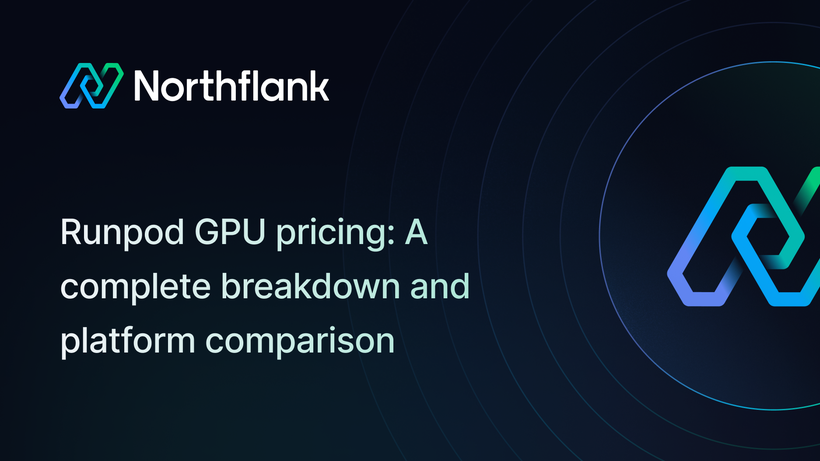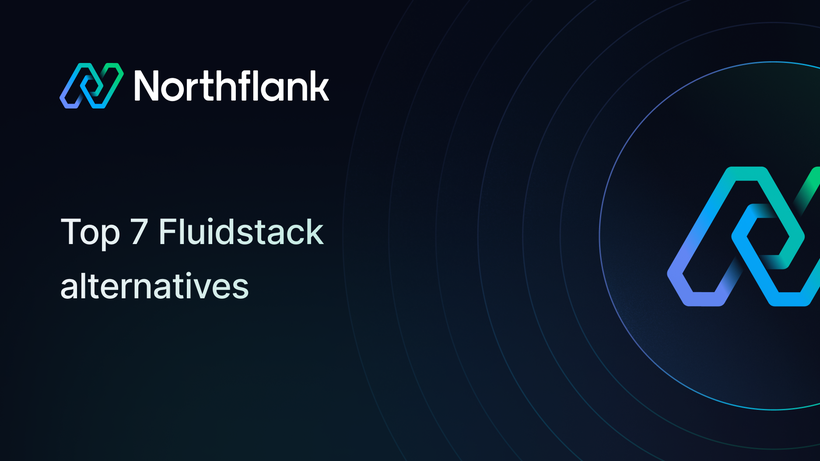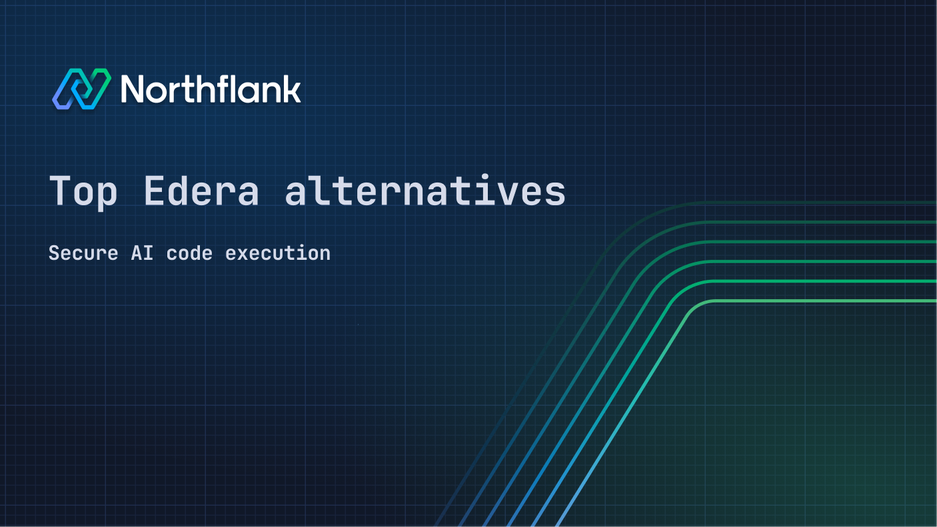

Top Edera.dev alternatives for secure AI code execution in 2025
When you're building platforms that execute code from AI models or users, security is everything and don’t let anyone tell you otherwise.
Whether that code comes from GPT-4, Claude, or your customers, one escape could compromise your entire infrastructure.
Traditional containers share kernels. That's a problem. Sophisticated attacks can break out, and when they do, game over.
This guide examines the leading Edera.dev alternatives for organizations that need bulletproof code isolation, comparing technologies, features, pricing models, and production readiness.
We wrote a detailed explanation of container isolation and everything you need to know about it here. Use it as a primer before going deeper into Edera alternatives.
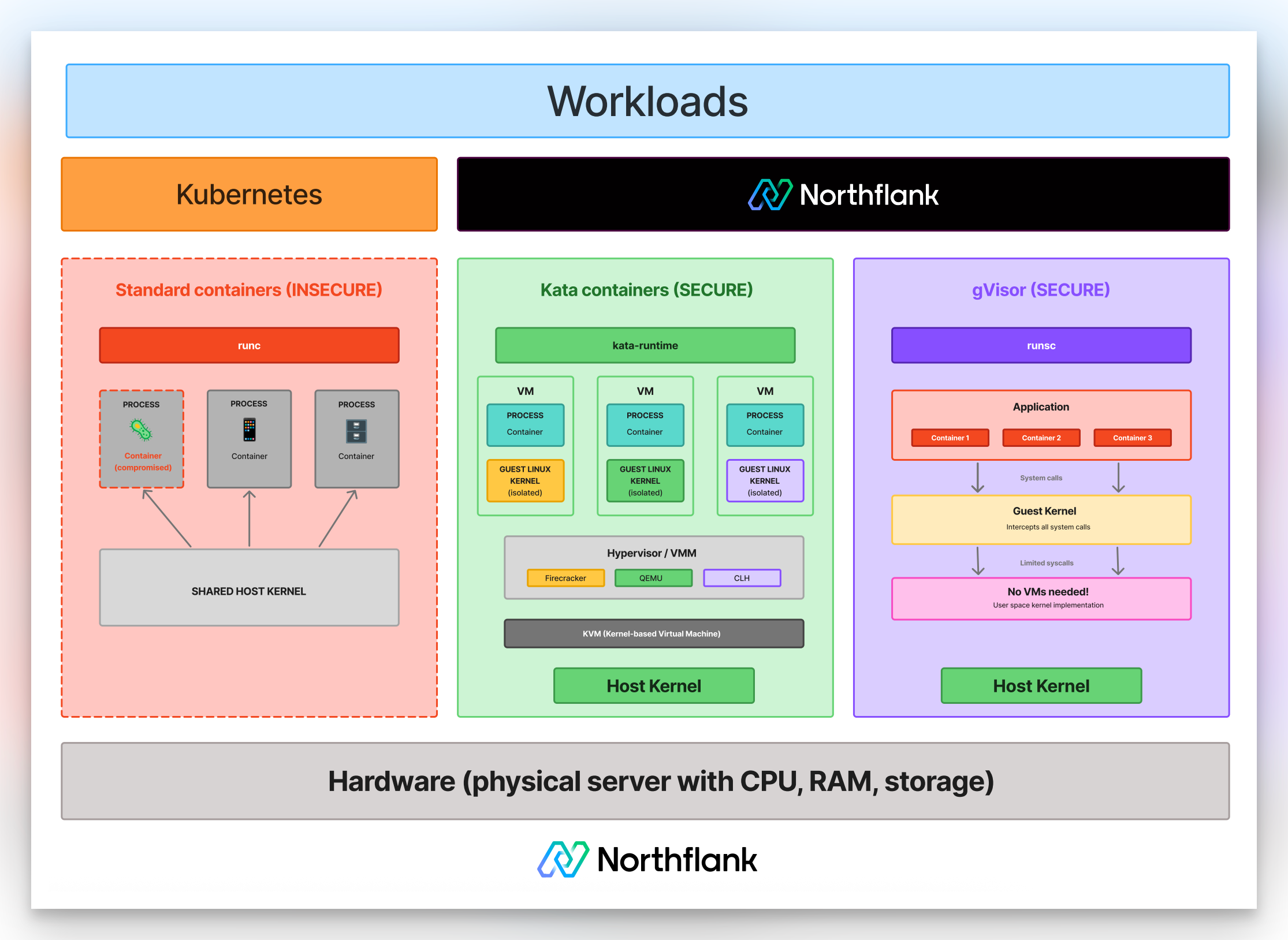
- Northflank delivers multiple isolation options (Kata Containers with Cloud Hypervisor (CLH) and gVisor, plus complete platform capabilities, BYOC deployment, and handles 2M+ workloads monthly.
- E2B.dev specializes in AI sandboxes using Firecracker, offers solid SDKs but caps sessions at 24 hours.
- Modal focuses on ML compute with gVisor isolation, Python-centric but enterprise-certified.
- Vercel Sandbox provides developer-friendly microVMs limited to 45-minute sessions, currently beta.
- Cloudflare Workers leverages V8 isolation for edge compute with zero cold starts, no persistence.
- Daytona.io delivers rapid sandbox provisioning for AI workflows, newest player in the space.
Edera represents a fundamental rethink of container security. Rather than patch the shared-kernel problem, they eliminated it entirely using Type 1 hypervisors (specifically Xen) to isolate each container with its own kernel.
Launched in 2024 with $20M in funding, their female-founded team built Krata (Rust-based Xen orchestration) to enable 250+ isolated workloads per server. The platform targets enterprise Kubernetes deployments requiring maximum security.
Edera solves one problem exceptionally well: hypervisor-grade container isolation.
Organizations needing broader capabilities, general workload orchestration, flexible deployment options, or accessible pricing, should evaluate Edera alternatives.
Edera.dev's hypervisor-centric approach excels at security but comes with trade-offs:
- Brand new platform (2024) with limited production deployments
- Enterprise-only pricing model
- Single isolation technology (Xen)
- Focused solely on container security, not full platform needs
- Steep learning curve for hypervisor-based architectures
- Not self-serve, there’s no easy way to try the product
Above all, limited cloud provider support for Xen creates constraints
Edera's reliance on Xen hypervisor significantly limits deployment options across major cloud providers.
Google Cloud Platform has never supported Xen, exclusively using KVM since inception.
Microsoft Azure runs on Hyper-V and offers no native Xen support, only providing migration tools for legacy Xen workloads.
While AWS maintains Xen compatibility through its "Xen-on-Nitro" technology for older instance families (M1-M4, C1-C4, etc.), all new instance types since 2017 run exclusively on the Nitro hypervisor.
This means Edera users on AWS are restricted to legacy instance types, missing out on the performance improvements and cost benefits of modern hardware.
In contrast, KVM enjoys universal support across all major cloud providers and is the default hypervisor for most Linux distributions. For organizations requiring multi-cloud flexibility or access to the latest cloud infrastructure, this Xen dependency represents a significant limitation that may drive them to explore container isolation alternatives that don't face similar deployment constraints.
| Platform | Isolation method | Persistent workloads | Deploy anywhere | Primary use case |
|---|---|---|---|---|
| Northflank | microVM (Kata Containers using CLH) and gVisor | Unlimited | Yes (BYOC) | Full platform + isolation, including AI workloads |
| E2B.dev | microVM (Firecracker) | 24 hours max | No | AI code interpreters |
| Modal | gVisor | With volumes | No | ML compute jobs |
| Vercel Sandbox | Firecracker | 45 minutes max | No | Dev environments |
| Cloudflare Workers | V8 engine | Stateless only | No | Edge compute |
| Daytona.io | Containers | Unlimited | Not documented | AI development |
Top Edera.dev alternatives, ranked
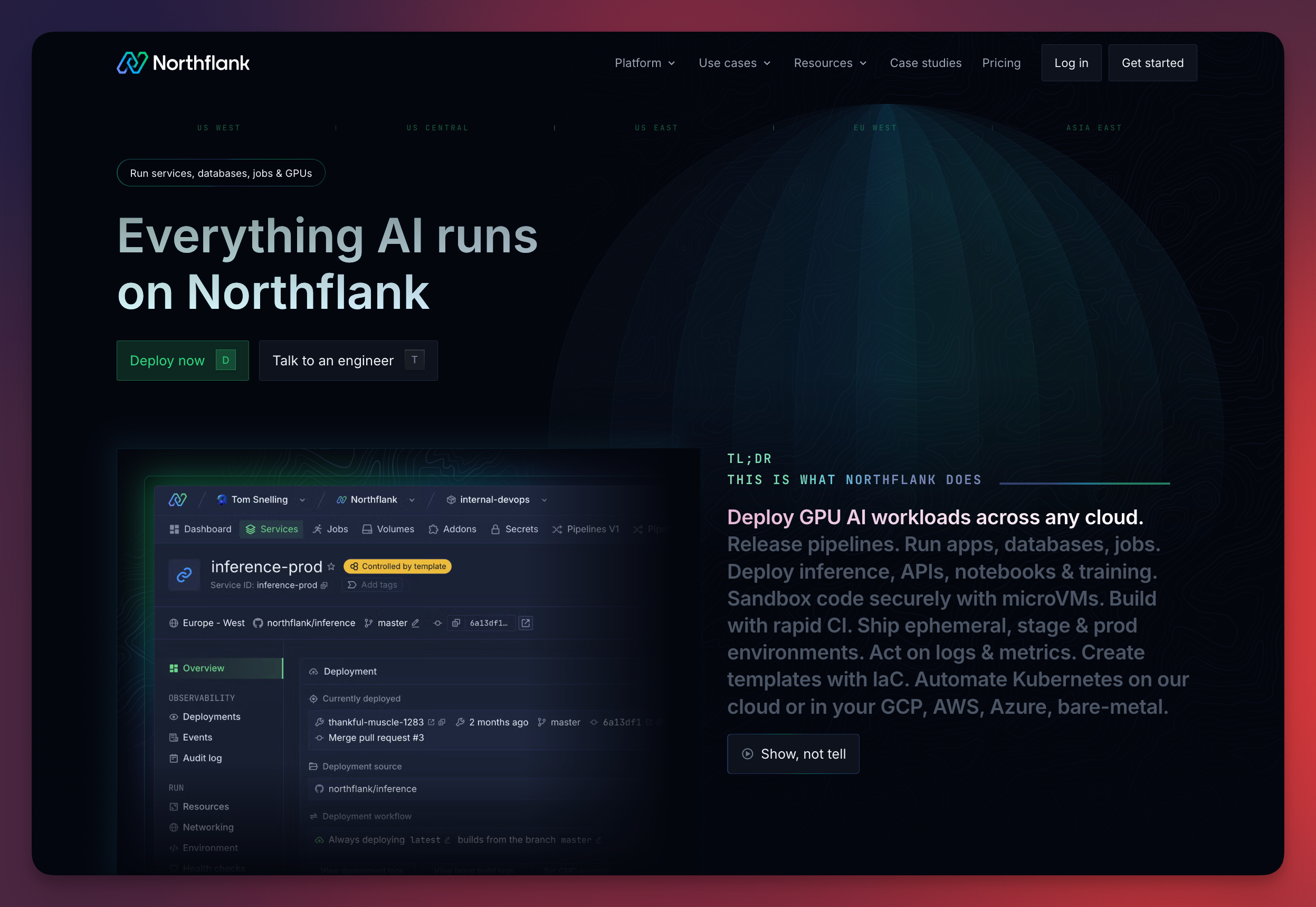
Northflank stands out by offering four distinct isolation technologies, letting you match security levels to workload requirements. Since 2019, they've processed millions of workloads monthly across their global infrastructure.
Pros:
- Different isolation per workload (depending on what’s best): gVisor, Kata, Firecracker, or Cloud Hypervisor
- Complete platform capabilities beyond sandboxing
- Self-service, you can try it without speaking to sales
- Deploy anywhere: managed cloud or your AWS/GCP/Azure/bare-metal
- Proven scale with enterprise customers
- Developer-friendly pricing
- Generous free tier for testing
Cons:
- Broader platform might exceed pure sandboxing needs
Northflank's key advantage: you're not buying a sandbox tool, you're getting infrastructure that happens to include world-class isolation. Run your APIs, databases, ML models, and untrusted code on one platform.
Edera is building a better container engine using Xen hypervisors. That's important, but it's just one piece of the puzzle.
Northflank delivers the complete platform developers actually need. You get APIs, SDKs, orchestration, monitoring, everything required to run production workloads. Plus, you get access to multiple isolation technologies: Kata, gVisor, Firecracker, or Cloud Hypervisor.
Here's the difference: Edera is building a more secure lock. Northflank gives you the entire security system, plus the house it protects.
For teams that need to ship products today, not tomorrow, Northflank's approach is clear. You get secure workloads running immediately, not promises about future developer tools and integrations.
E2B laser-focuses on AI code execution, building their entire stack around Firecracker microVMs. Czech founders raised $11.5M to create the smoothest developer experience for adding code interpretation to AI apps.
Pros:
- Blazing 150ms cold starts
- Purpose-built for AI agents
- Sessions persist up to 24 hours
- Comprehensive SDKs (Python, JS/TS)
- Fully open-source infrastructure
Cons:
- Sandbox-only solution
- Production self-hosting not ready
- Hard 24-hour session limit
- No orchestration layer
- Limited language support
Perfect for AI startups needing quick sandbox integration. Less ideal for complex infrastructure requirements.
Modal rebuilt cloud computing specifically for ML workloads, using gVisor isolation and memory-safe Rust infrastructure. They've achieved SOC 2 Type 2 certification and support GPUs from consumer to datacenter grade.
Pros:
- Near-instant container starts
- Full GPU lineup (T4 through B200)
- Enterprise security certifications
- Generous $30 monthly credits
Cons:
- Python ecosystem only
- No infrastructure control
- Serverless-only architecture
- Gets pricey for 24/7 workloads
Ideal for ML teams needing secure, scalable compute without infrastructure management.
Vercel brings their frontend expertise to backend isolation, using Firecracker to create lightweight development environments. Still in beta.
Pros:
- Lightning-fast boot times (under 125ms)
- Native Node.js and Python
- 5 free CPU hours monthly
Cons:
- 45-minute hard timeout
- Beta stability concerns
- Development-only focus
- No production features
Great for preview environments and testing. Not ready for production AI workloads.
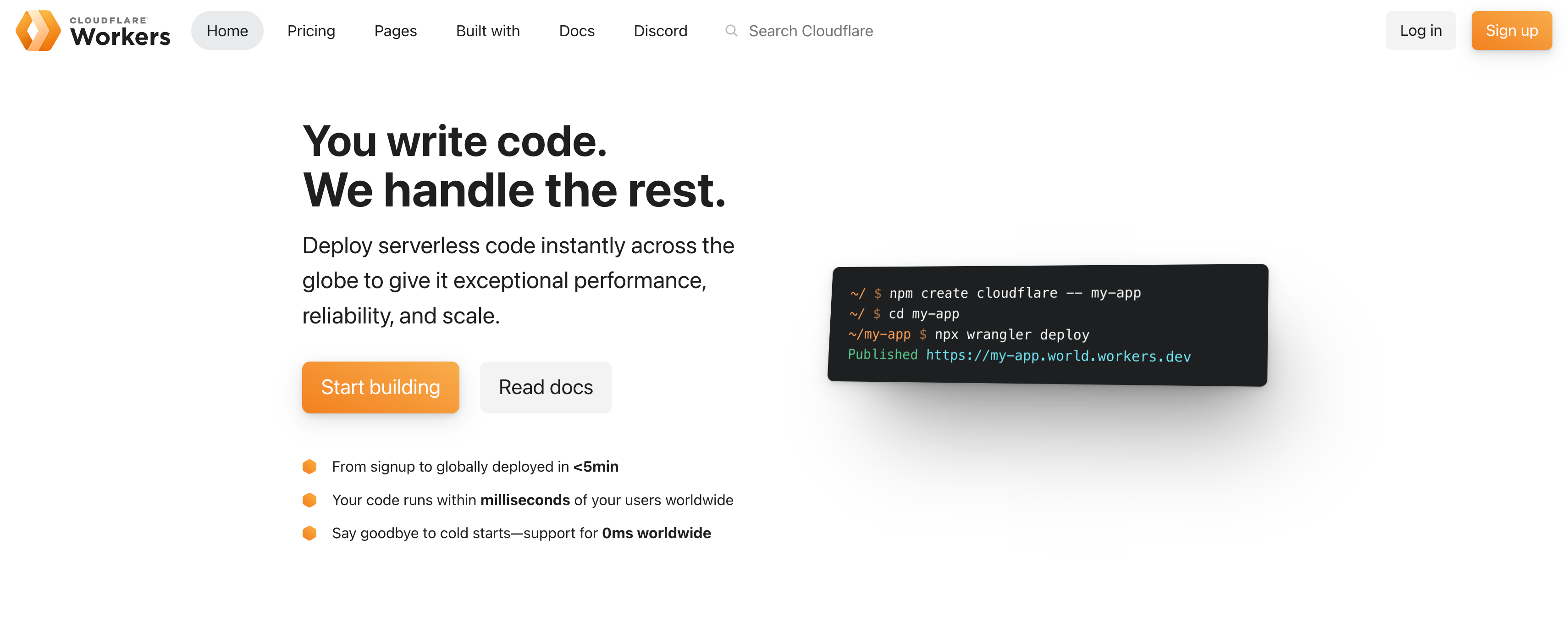
Cloudflare's V8-based isolation trades VM-level security for massive scale and geographic distribution. Powers millions of edge functions across 330+ locations.
Pros:
- Instant execution (no cold starts)
- Global deployment by default
- 100k daily requests free
- Unbeatable edge latency
Cons:
- JavaScript/WASM only
- Ephemeral execution only
- No file system access
- Locked to Cloudflare
Unmatched for edge logic but wrong tool for stateful AI applications.
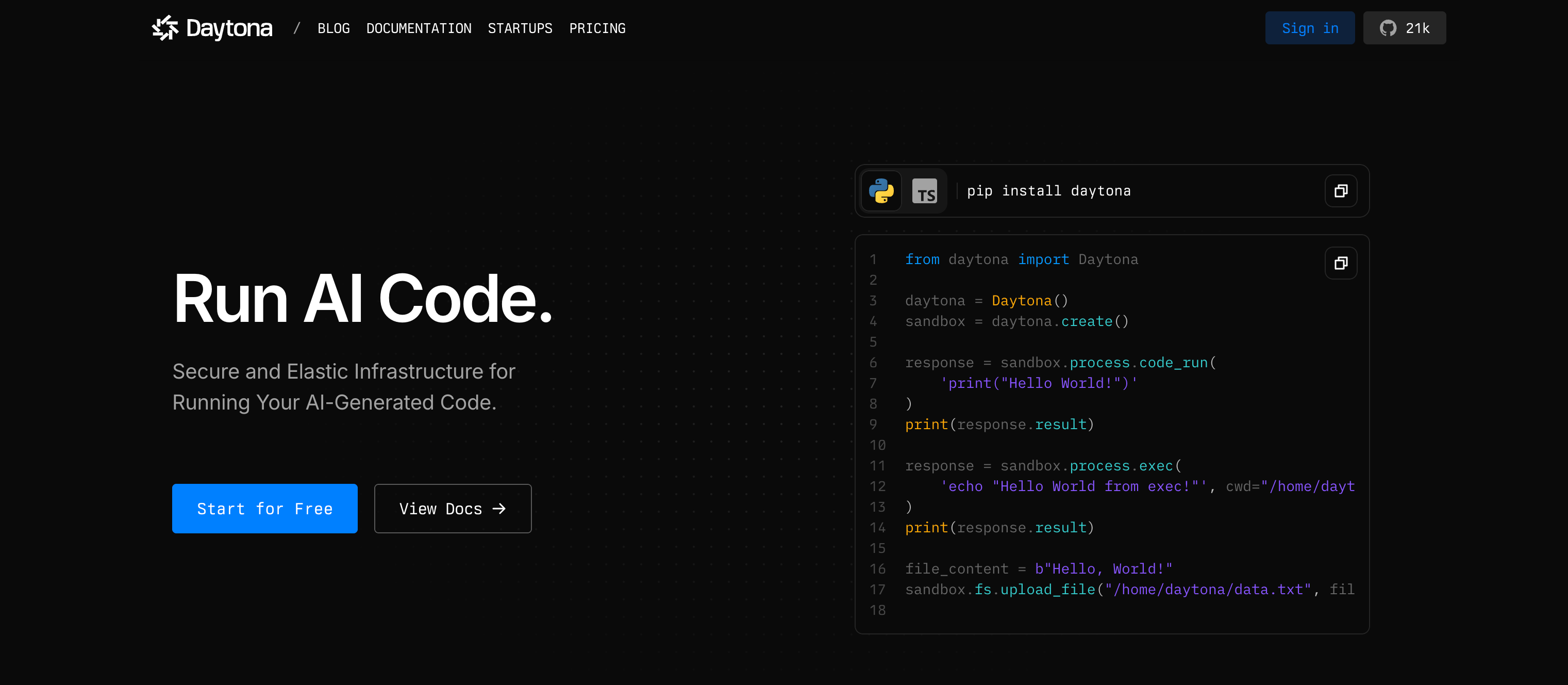
Daytona pivoted from dev environments to AI code execution, achieving impressive sub-90ms provisioning. The Codeanywhere team brings IDE expertise to sandbox design.
Pros:
- Fastest environment creation
- IDE-grade developer tools
- Full language support
- $200 starter credits
Cons:
- Youngest platform (2023)
- Usage-based pricing surprises
- Self-hosting details sparse
- Standard container isolation
Strong potential but needs time to mature. Watch this space.
Here's what separates Northflank from single-purpose Edera alternatives: it's infrastructure that scales with your ambitions.
Instead of stitching together services:
- Secure code execution with your choice of isolation
- Production APIs running alongside
- Managed databases with automated operations
- Scheduled jobs and batch processing
- GPU workloads when you need them
- Unified security, monitoring, and deployment
Real companies like Sentry and Writer trust Northflank for multi-tenant deployments where security failures aren't an option. Two million workloads monthly prove the platform's stability.
Freedom others can't match:
- Instant start: Use Northflank's cloud
- Your cloud: BYOC to AWS, GCP, Azure
- Hybrid: Mix managed and self-hosted
- Global: Consistent experience worldwide
Enterprise features from day one:
- Advanced access controls
- Compliance tooling
- Detailed audit trails
- Professional support
Choosing an Edera alternative means balancing security needs against operational reality. Pure sandboxing tools solve one problem. Modern applications need more.
Northflank wins because it delivers:
- Choice of isolation technologies (not locked to one)
- Infrastructure for your entire stack
- Proven reliability at scale
- Deployment flexibility unmatched by competitors
- Pricing that scales from hobby to enterprise
Stop juggling multiple platforms. Get security and scale in one solution.
Northflank turns secure code execution from a special requirement into standard operating procedure.
